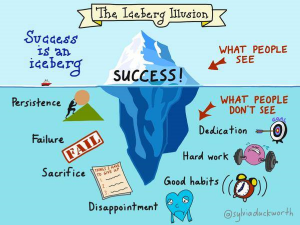SWAY IN THE STANDING POSITION
by Carrie Quigley.
Sway is the back and forward movement that is observable in some standing shooting positions. This problem can come from many different areas, including the way the rifle is set up; changes to the zero point; changes to the outer position; or from a lack of balance, (Buhlman, et al, 2008). To overcome sway in your standing position, you need to look at all the possible areas the problem is coming from.
Rifle set up:
Check the rifle and the length of the butt to ensure you are able to reach the pistol grip easily and with comfort. Changes may also be made to the balance point within the rifle, to make it heavier in the butt so you can hold the rifle with more control, (remember though to consider the weight restrictions in the rules).
Changes to the zero point:
If your zero point has altered, the position is holding the rifle onto the target unnaturally. This will lead to a compromise in the stability of your position. Check the zero point (as discussed in a previous article) and make the necessary changes.
Changes to the outer position:
Turning the toes outward or inward slightly can help with sway. To work out what works best for you, try out different positions with your feet, close your eyes, and make your decision based on which position gives you the best feeling for stability. It may help to have someone watch you from behind and give you feedback on their observations.
Balance:
It is a natural for the human body to sway slightly when standing; and that the mechanism within the calf muscle that helps us maintain an upright position also contributes to a gentle sway, (Loram et al, 2009, Fitzpatrick and Gandevia, 2005). The implication of this for rifle shooters is that sway is an inevitable part of standing, and that exercises need to be introduced to reduce the impact of this.
Some training drills to help improve your balance include:
- Holding exercise, 1 – begin holding the rifle in the standing position with no extra support from the shooting clothes, then put on shooting boots and pants and continue holding. Next, put on the shooting jacket. The position is slowly built up and moves from a less stable position to more supported with the shooting clothes. The body has to work hard to stay balanced when there is no support from the shooting clothes. This exercise can last for 15 minutes.
- Holding exercise, 2 – stand in the shooting position with shooting clothes on. When you have found your zero point, you are ready to begin the holding. Take your normal time to get into your shooting position, then when you place your head on the cheek piece, relax and slowly breathe out and close your eyes for the time it is comfortable to be without breath. Focus on being as still as you can and on maintaining balance, as well as on the muscles, and the inner position. This exercise can last for 15 minutes.
- Holding exercise, 3 – holding in the standing position on unstable blocks (rockers). · Muscle strengthening exercises – joining a Pilates or yoga class, or develop a physical exercise program that improves the strength of the abdominal muscles, which are important in holding the standing position stable.
- Shooting at a thin vertical line instead of a normal round target can further increase awareness of balance, hold and aiming.
The use of a stand as a visual cue of your stability can be helpful for some people. You may be able to see if you are moving as you will have the comparison of the stand.
Happy Training.
References
Buhlmann, G., Reinkemeier, H., Eckhardt, M., Murray, B., Bindra, A., Hecker, M., (2008) Ways of the Rifle, MEC, Dortmund, Germany. Fitzpatrick. R.C.,
Gandevia, S.C., (2005) Paradoxical muscle contractions and the neural control of movement and balance, J. Physiol, 564.1, p2
Loram, I.D., Magnaris, C., Lakie, M., (2009) Paradoxical muscle movement during postural control, Medicine and Science in Sports and Exercise, 41 (1) pp 198-204.

